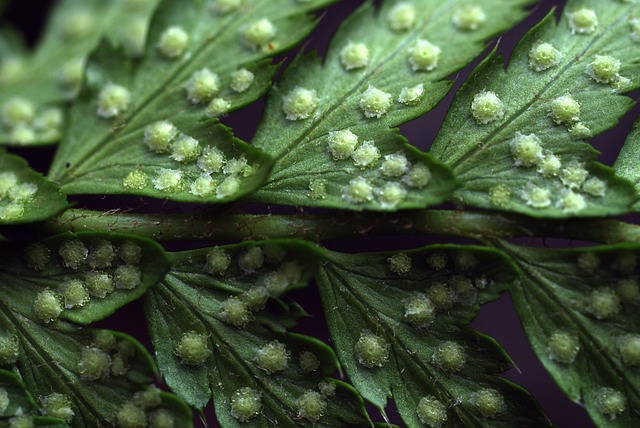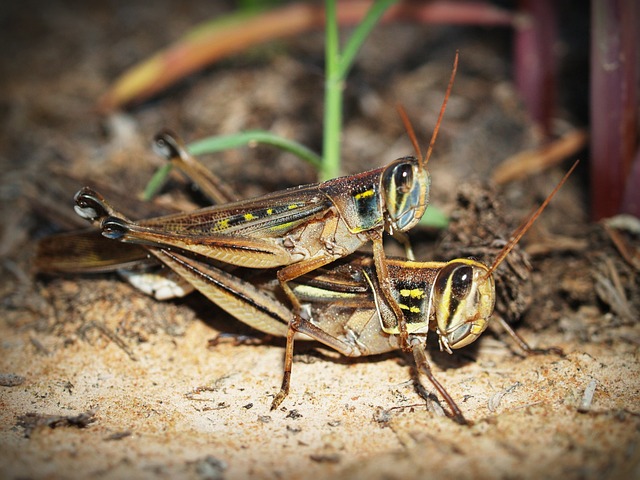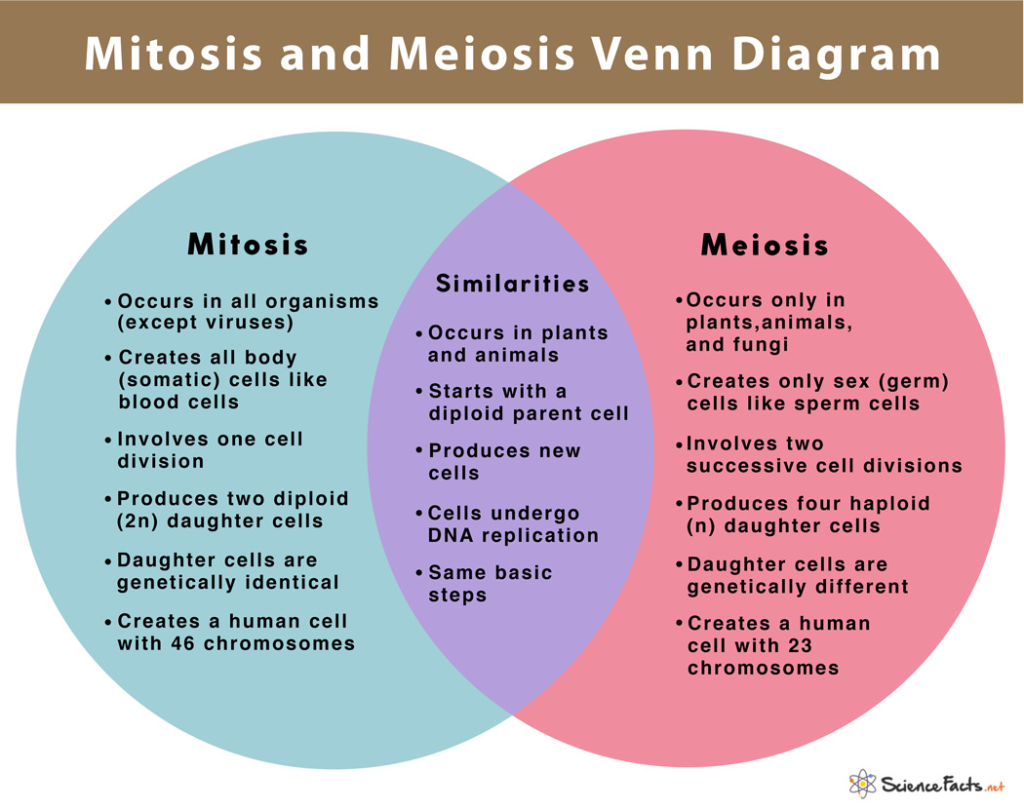Biology 5 – Reproduction and Cell Division
> Section One – Types of Reproduction
>>Asexual Reproduction
Asexual reproduction is a type of reproduction that does not involve the fusion of gametes or change in the number of chromosomes. The offspring that arise by asexual reproduction from either unicellular or multicellular organisms inherit the full set of genes of their single parent and thus the newly created individual is genetically and physically similar to the parent or an exact clone of the parent.

Activity 1a – Complete Seneca Learning – 5.1.1
>>Sexual Reproduction
Sexual reproduction is a type of reproduction that involves a complex life cycle in which a gamete (haploid reproductive cells, such as a sperm or egg cell) with a single set of chromosomes combines with another gamete to produce a zygote that develops into an organism composed of cells with two sets of chromosomes (diploid). This is typical in animals.

Activity 1b – Complete Seneca Learning – 5.1.2
>Section Two – Chromosomes
>>Genome, Chromosomes, and Genes
A chromosome is a package of DNA with part or all of the genetic material of an organism. Otto Bütschli was the first scientist to recognize the structures now known as chromosomes, but work of several other scientists at the start of the 1900s was needed to point out the connection between the rules of inheritance and the behavior of the chromosomes. The gain or loss of DNA from chromosomes can lead to a variety of genetic disorders.

Activity Two – Complete Seneca Learning – 5.2.1
>Section Three – The Cell Cycle
>>The Cell Cycle
The cell cycle, or cell-division cycle, is the series of events that take place in a cell that causes it to divide into two daughter cells. These events include the duplication of its DNA (DNA replication) and some of its organelles, and subsequently the partitioning of its cytoplasm, chromosomes and other components into two daughter cells in a process called cell division.

Activity 3a – Complete Seneca Learning – 5.2.3
>>Control of the Cell Cycle
Apoptosis (from Ancient Greek: apóptōsis, ‘falling off’) is a form of programmed cell death that occurs in multicellular organisms and in some eukaryotic, single-celled microorganisms. Biochemical events lead to characteristic cell changes and death. The average adult human loses between 50 and 70 billion cells each day due to apoptosis. For an average human child between eight and fourteen years old, each day the approximate loss is 20 to 30 billion cells.

Activity 3b – Complete Seneca Learning – 5.2.3
>Section Four – Mitosis & Meiosis
>>Mitosis
Mitosis is a part of the cell cycle in which replicated chromosomes are separated into two new nuclei. Cell division by mitosis is an equational division which gives rise to genetically identical cells in which the total number of chromosomes is maintained.

Activity 4a – Complete Mitosis Mover
Activity 4b – Complete Seneca Learning – 5.2.4
>>Mitosis & Cancer
Cancers comprise a large family of diseases that involve abnormal cell growth with the potential to invade or spread to other parts of the body. They form a subset of neoplasms. A neoplasm or tumor is a group of cells that have undergone unregulated growth and will often form a mass or lump, but may be distributed diffusely.

Activity 4c – Complete How Cancer Cells Grow and Divide
Discussion Questions
- What other kinds of signals do you think cells would respond to that would make them grow and divide appropriately? Explain.
- Why do you think the oncogene acts as though it is stuck in the “on” position?
Activity 4d – Complete Seneca Learning – 5.2.5
>>Meiosis Overview
Meiosis is a special type of cell division in sexually-reproducing organisms that produces the gametes, such as sperm (male) or egg cells (female). It involves two rounds of division that ultimately result in four cells with only one copy of each chromosome (haploid). Additionally, prior to the division, genetic material from the paternal and maternal copies of each chromosome is crossed over, creating new combinations of code on each chromosome. Later on, during fertilization, the haploid cells produced by meiosis from a male and a female will fuse to create a cell with two copies of each chromosome again, the zygote.

Activity 4e – Complete Gizmo – Meiosis
Activity 4f – Complete Seneca Learning – 5.3.1
>>Mitosis vs Meiosis
What is difference between mitosis and meiosis?
There are two kinds of cell division: mitosis and meiosis. What’s the Difference? Mitosis produces two genetically identical “daughter” cells from a single “parent” cell, whereas meiosis produces cells that are genetically unique from the parent and contain only half as much DNA.

Activity 4g – Complete Seneca Learning – 5.3.2
>Section Five – Stop Motion
>>Activity 5 – Stop Motion Cell Division
Stop motion is an animated filmmaking technique in which objects are physically manipulated in small increments between individually photographed frames so that they will appear to exhibit independent motion or change when the series of frames is played back. Stop motion of flat materials such as paper, fabrics or photographs is usually called cutout animation.
We have learned at both sexual and asexual reproduction and the differences between male and female cell division. Now it’s time to create a stop motion video to demonstrate your understanding. Choose one type – mitosis or meiosis for the subject and start to make your props.
Here’s an example. Do better and get some actual movement in it. You could just concentrate on one part of the process such as the cleavage or chromosome condensing.
>Wrap Up! – Reproduction and Cell Division: Unit Test
>>Activity 6a – Khan Academy Test
Don’t forget to log in.
>>Activity 6b – Quiz
Cell Division Quiz
Just a quick quiz to check out what you learned and understood today. The questions could be based on information from Seneca, the text, images, or games, but they all will be based around images.

